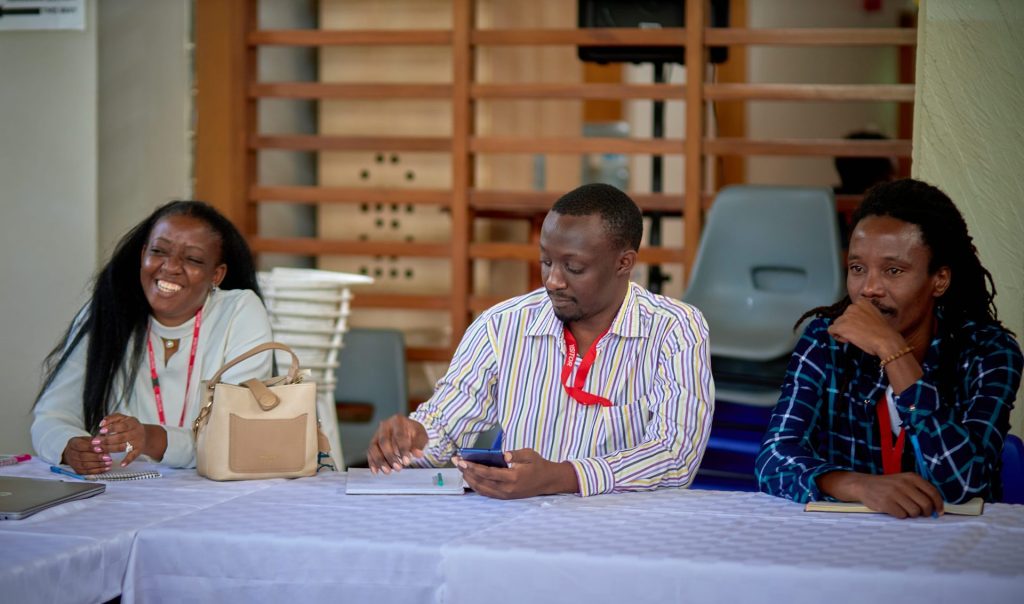“Leave the Cat Alone! (or BLEEP Save the Cat!)”
Home »

What is a story? It’s a simple enough question. Or at least it should be. Especially for a room full of writers who’s calling is to well, tell stories. People, who, in another time might have been Seers or Oracles or Orators who held onto and passed on the history and knowledge of their people.
Adjani, with his locks and piercing but not unkind gaze scanned the room. There were about fifteen of us. Anyone? Maybe it was that deep rooted school age fear of getting the answer wrong in front of the entire class but people were reluctant to answer. Come on guys, what’s a story? Let’s make this a conversation, not a classroom.
Finally, someone put up their hand. A story is a sequence of interconnected events. Almost but something’s missing. I audibly agreed with Adjani – it had something but it didn’t quite feel complete – and so he turned his attention to me and I did what I sometimes do in situations like that, I blanked. My answer wound up being an almost but not quite there one as well. Finally, someone put up their hand and introduced the element of conflict.
Yes! Yes! To put it simply, a story is a character going on a journey to achieve a goal while experiencing obstacles along the way. That was all. Nothing more, nothing less. It was so simple. So simple in fact that it doesn’t surprise me how something so fundamental often gets buried in all the noise of writing a script, directing a film, editing the footage, coming up with the marketing plan etcetera etcetera.

A story is a character going on a journey to achieve a goal while experiencing obstacles along the way. Taking this definition, I silently applied it to Adjani Salmon’s award-winning television series, “Dreaming Whilst Black”. I’d come across a trailer for it a couple of months before and was instantly riveted. As soon as I had the opportunity, I downed it as quickly as I could. I loved every minute of it. When’s season 2? And so, when I found out that its creator was going to be Uganda, I leapt at the opportunity to be in the same room as him.
The show is about Kwabena, a struggling film maker, fighting to finance and make his first feature film ‘Jamaica Road’. There are many other descriptives one could add to it to paint a more elaborate picture about the series but at its core, that’s what it was about. It’s a story that resonates with me on multiple levels. Not least of all because I’m a dreamer and well, because I’m black.
Using this definition as a spring board Adjani took us through the fundamentals of how to craft a good story, using several super cool short films as illustrations. I appreciated this, because just by virtue of us being in the room he rightly determined that he didn’t have to take us through the basic elements of a script, the three-act structure and other things people tend to teach in your average screenwriting workshop or instruction manual. He did have one thing to say about Blake Synder’s “Save the Cat” methodology to screenwriting, however, a methodology a lot of screenwriters in Europe and Hollywood seem to hold close to their hearts like it’s the screenwriter’s bible.
And that one thing was, F^&K Save the Cat! All it does is make peoples stories homogeneous; killing their flavor and draining them of their juice. It’s only a step or two away from AI written scripts. And who wants that besides the film studios?

To be fair, there are some structural basics one can learn from it. You have to know the rules before you can break them, after all. The problem comes when one follows the rules religiously. Don’t be one of those people, was his warning. And so, in short, F^&k save the cat!
Everyone agreeing that it would probably be best to just leave the cat alone, Adjani, still using the definition of a story as a foundation, took us through how to craft a logline – or one sentence pitch – for our stories.
Movies need money to get made and so in order to get the attention of the people with the money one has to be able to get their attention in the shortest amount of time possible. Call it the elevator pitch.
Each one of the attendees applied with a story idea and so we wrapped up the day by going round the room and Adjani helping each of us whittle our ideas down to the cleanest and most concise one-liners possible. I found this especially helpful since I often have the urge to over explain my stories and ideas out of fear that they may not come across how I want them to. With this exorcise I found that with some effort I can be concise and still express the elements of my ideas I feel make them unique.
All in all, the day was fun, insightful and a good perspective refresher. It was just a day but that day with Adjani is going to stick with me for a long time to come.
But also, in all seriousness, when’s season 2?
By Lloyd Lutara
